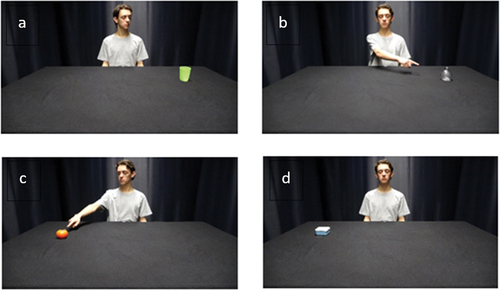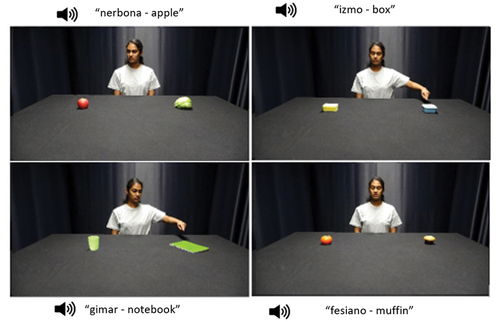Figures & data
Figure 1. Examples of stimuli illustrating the four main conditions: gaze, pointing only (eyes closed), gaze + pointing, and no cue (eyes closed).

Table 1. Psycholinguistic properties of the selected stimuli.
Figure 2. Trial procedure that introduced an instructor with a straight gaze (0.5 s), followed by a target appearing in one of two positions on the lateral plane along with the instructor’s cue (depending on condition) and audio naming the item and its translation to L1.

Table 2. Mean percentage correct scores, SDs, and SEs on each of the four conditions for both production and recognition tasks in the first experiment.
Figure 3. Images in four modified conditions for Experiment 2: gaze only, pointing only, gaze + pointing, and no cue.

Table 3. Mean percentage scores, SDs, and SEs on each of the four conditions for both production and recognition tasks in the second experiment.
Table 4. Summary of the generalized linear mixed-effects model for word learning outcomes measured by the recognition test (Experiment 2).
Table 5. Mean percentage scores, SDs, and SEs on each of the six conditions for both production and recognition tasks in the third experiment.
Table 6. Summary of the generalized linear mixed-effects model for word learning outcomes measured by the recognition test (Experiment 3).

